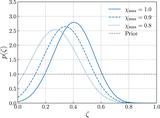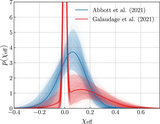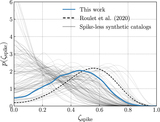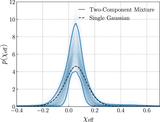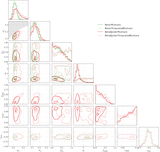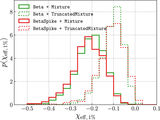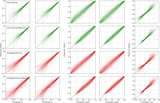Image Details
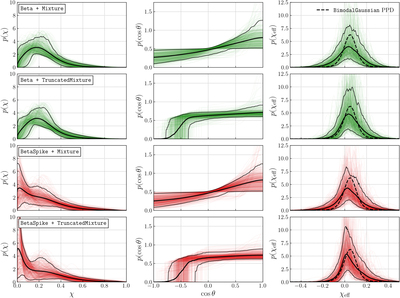
Caption: Figure 5.
Inferred distributions of component spin magnitudes (left), spin–orbit tilts (middle), and effective inspiral spins (right) of binary black holes under the various component spin models considered in this paper. Solid black lines denote the median and the 90% credible intervals, while red/green light curves correspond to individual draws from the posterior for each model. Among models that allow for a distinct subpopulation of nonspinning systems (bottom two rows), we infer that the fraction of binaries in such systems is consistent with zero. Meanwhile, we find that the ﹩\cos \theta ﹩ distribution confidently extends to negative values; models that allow for a sharp truncation in the ﹩\cos \theta ﹩ distribution require this truncation to occur at ﹩{z}_{\min }\lt 0﹩. Despite the varying component spin magnitude and tilt distributions recovered by these different models, all yield similar χ eff distributions. For reference, the dashed black curves in the right-hand column show the mean χ eff distribution obtained by direct inference with the BimodalGaussian model of Section 4; all four component spin models give χ eff distributions that are consistent with this result.
Copyright and Terms & Conditions
© 2022. The Author(s). Published by the American Astronomical Society.


